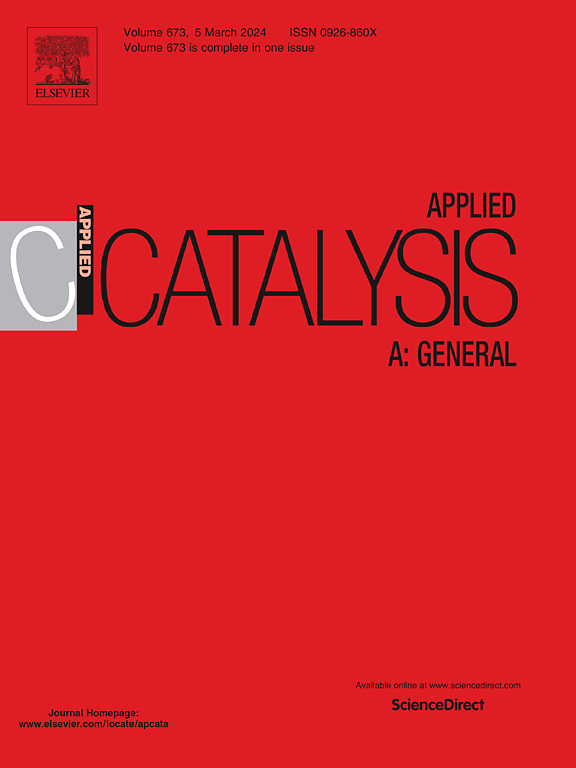无溶剂合成介孔MoO3-V2O5/Al2O3催化剂的液相选择性氧化糠醛制马来酸酐
IF 4.7
2区 化学
Q2 CHEMISTRY, PHYSICAL
引用次数: 0
摘要
催化选择性氧化生物质衍生的平台化学品成单体提供了一个可持续的替代途径,以化石为基础的生产化学品。本文采用无溶剂固相研磨法制备了分散Mo-V氧化物催化剂的介孔Al2O3,用于糠醛液相氧化制马来酸酐。糠醛选择性氧化制马来酸酐取决于催化剂的Mo/V摩尔比、催化剂煅烧温度和催化剂合成方法。Mo-V与Al2O3的协同作用对提高马来酸酐的催化活性和选择性至关重要。在5个催化循环中,研究了25Mo1VA催化剂的可重复使用性,由于表面碳质物质的形成,马来酸酐产率逐渐下降。然而,大部分马来酸酐产率可以利用催化剂再生循环(600 °C, 3 h)回收。本文章由计算机程序翻译,如有差异,请以英文原文为准。
Solvent-free synthesis of mesoporous MoO3-V2O5/Al2O3 catalyst for liquid phase selective oxidation of furfural to maleic anhydride
The catalytic selective oxidation of biomass-derived platform chemicals into monomers offers a sustainable alternative pathway to fossil-based production of chemicals. Herein, mesoporous Al2O3 with dispersed Mo-V oxide catalysts were prepared through a solvent-free solid-state grinding method for the liquid phase oxidation of furfural to maleic anhydride. The selective oxidation of furfural to maleic anhydride was dependent on the Mo/V mole ratio of the catalyst, catalyst calcination temperature, and catalyst synthesis method. The synergistic interaction of Mo-V with Al2O3 was identified as crucial for enhancing catalytic activity and selectivity towards maleic anhydride. The reusability of the 25Mo1VA catalyst was studied over five catalytic cycles with a progressive loss of maleic anhydride yield due to the formation of surface carbonaceous species. However, the majority of maleic anhydride yield could be recovered utilizing a catalyst regeneration cycle (600 °C, 3 h).
求助全文
通过发布文献求助,成功后即可免费获取论文全文。
去求助
来源期刊

Applied Catalysis A: General
化学-环境科学
CiteScore
9.00
自引率
5.50%
发文量
415
审稿时长
24 days
期刊介绍:
Applied Catalysis A: General publishes original papers on all aspects of catalysis of basic and practical interest to chemical scientists in both industrial and academic fields, with an emphasis onnew understanding of catalysts and catalytic reactions, new catalytic materials, new techniques, and new processes, especially those that have potential practical implications.
Papers that report results of a thorough study or optimization of systems or processes that are well understood, widely studied, or minor variations of known ones are discouraged. Authors should include statements in a separate section "Justification for Publication" of how the manuscript fits the scope of the journal in the cover letter to the editors. Submissions without such justification will be rejected without review.
 求助内容:
求助内容: 应助结果提醒方式:
应助结果提醒方式:


